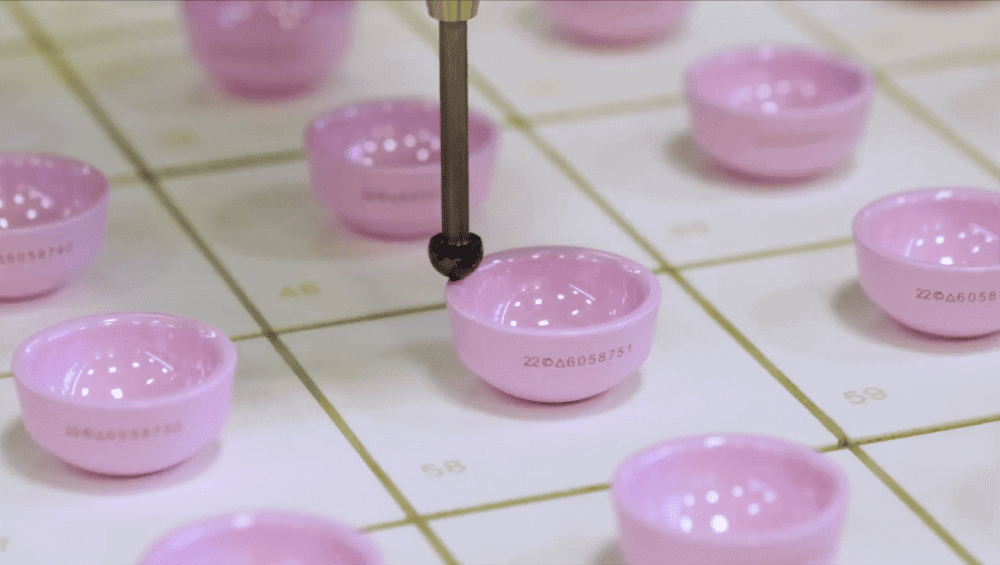
[Image above] Example of BIOLOX delta ceramic liners by CeramTec, which was the liner extracted and replaced in this case study. Credit: CeramTec – The Ceramic Experts, YouTube
Compared to other fields, the medical industry can be slow to innovate due to the vulnerability of their clientele. If a new technology is adopted too quickly, without thorough screening, patients may experience lifelong health complications caused by the fledgling product.
Emergencies, however, can necessitate the adoption of novel technologies. As the COVID-19 pandemic showed, the risks of not innovating can outweigh the risks of speeding up the development process.
While pandemic-related inventions are a high-stakes example that helped save the lives of millions, smaller-scale innovations that may only help thousands of patients are worthy of recognition as well. That is because, regardless of the specific injury or illness, “Prevention is better than cure,” as the old saying goes.
In the journal Arthroplasty Today, medical professionals in England described the use of a novel technique to extract a ceramic liner during revision total hip arthroplasty when established strategies proved ineffective.
Arthroplasty is a surgical procedure to restore the function of a joint. In total hip arthroplasty, the damaged bone and cartilage within the hip joint is removed and replaced with prosthetic components.
While the longevity of hip replacements is continually improving, it is a given that the replacement will eventually fail because of processes such as infection, fracture, or a combination of normal tribological and biological processes. In that case, patients must undergo revision surgery to correct the issue.

Components of a hip prosthesis. Credit: Mikael Häggström, using source image by BruceBlaus; Wikimedia (CC BY-SA 4.0)
When extracting and replacing prosthetic components in the hip joint, preventing collateral damage to the adjacent pelvic bone is a top priority. As such, since the early 2000s, the Explant Acetabular Cup Removal System has been a go-to method for surgeons because it allows for quick extraction of the acetabular cup with minimized damage.
Extracting the entire cup is not always necessary, however. Sometimes it is just the liner within the shell that needs replaced, in which case removing the entire cup is an unnecessarily intrusive procedure.
Extracting just the liner, though, can be challenging. The simplest technique for doing so is described by Pitto (2016). It involves placing a metallic impactor along the external rim of the cup and striking it with a hammer. The liner will dissociate from the internal metal surface, allowing it to be removed from the shell.
In cases where the liner does not detach from the shell, a technique described by Whiting and Lewis (2015) can be used. A high-frequency drill is applied against the outer diameter of the shell, and the resulting vibrations cause dissociation of the liner.
In the Arthroplasty Today case study, neither of these methods worked to loosen the liner from the shell. So, the surgical team used a 1-mm Legend Ball burr (Midas Rex) to create a small rectangular wedge at the shell–liner interface by cutting into the metal shell. This wedge provided a contact point for the metal impactor and enabled dissociation of the ceramic liner, which they then removed and replaced.

Schematic depicting the novel technique for extracting the ceramic liner. (a) A 1-mm burr is used to create a small, rectangular wedge at the shell–liner interface. (b) The rectangular wedge is used as a contact point for the metal impactor to enable dissociation of the liner. Credit: Gurung et al., Arthroplasty Today (CC BY-NC-ND 4.0)
The authors note in the discussion section of the open-access paper that the novel extraction method demonstrates two learning points.
- Unlike previously described methods, this technique provides a contact point on the external surface of the acetabular insert. And while it avoids damage to the ceramic insert and generation of ceramic debris, it does create some titanium debris (which can be mitigated by careful positioning of small wet swabs).
- This technique is only possible when the revision takes place from an anterior approach with a traction table extension. But the potential benefit is “less extensile exposure with minimal soft tissue disturbance and a rapid postoperative recovery,” they write.
The authors stress that it is rare for other techniques to prove ineffective. This technique was undertaken as a last resort to avoid the need for total acetabular component removal, which would have caused additional bone loss between and around the fixation screws.
“Nevertheless, we would encourage its consideration for cases with acetabular fixation screws that have proven resistant to other strategies for ceramic acetabular liner extraction in other acetabular designs,” they write.
The open-access paper, published in Arthroplasty Today, is “A simple technique to remove an incarcerated ceramic liner in revision hip arthroplasty” (DOI: 10.1016/j.artd.2023.101142).
Author
Lisa McDonald


